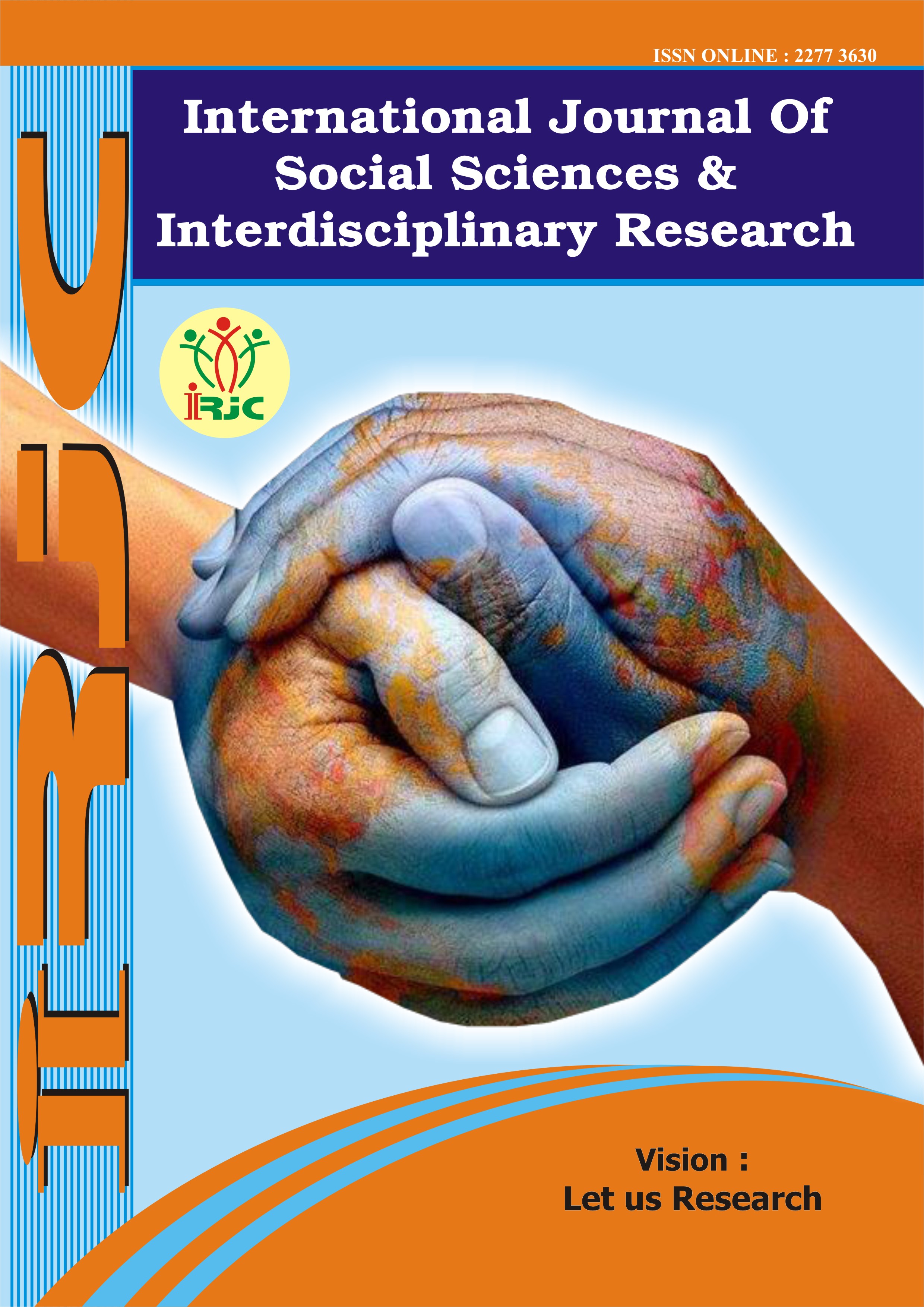COMPARATIVE ANALYSIS OF THE PHRASEMAES OF ABDURAHMAN JAMI'S "TUHFAT UL-AHROR" AND ALISHER NAVOI'S "HAYRAT UL-ABROR" EPICS
Keywords:
Human society, dictionaries, poetry, beneficial relations, syntactic relationship, explanatory dictionaries, phrases.Abstract
In Uzbek linguistics, A. Nurmanov for the first time raised the issue of modeling on the example of syntactic units of the Uzbek language. He argued that the starting point for a systematic study of syntax should be the syntactic model. A generalized structural scheme realized through real sentences is a syntactic model. There are two principles for defining syntactic models: the first is to determine the minimum structure sufficient to be a predicative unit; the second principle is to identify the structural elements that serve to ensure not only grammatical integrity but also semantic completeness. Phraseological units can also be syntactically modeled.
References
Aripov, M., Sharipbay, A., Abdurakhmonova, N., Razakhova B.: Ontology of grammar rules as example of noun of Uzbek and Kazakh languages. In: Abstract of the VI International Conference “Modern Problems of Applied Mathematics and Information Technology - Al-Khorezmiy 2018”, pp. 37–38, Tashkent, Uzbekistan (2018)
Abduraxmonova, N. Z. "Linguistic support of the program for translating English texts into Uzbek (on the example of simple sentences): Doctor of Philosophy (PhD) il dis. aftoref." (2018).
Abdurakhmonova N. The bases of automatic morphological analysis for machine translation. Izvestiya Kyrgyzskogo gosudarstvennogo tekhnicheskogo universiteta. 2016;2 (38):12-7.
Abdurakhmonova N, Tuliyev U. Morphological analysis by finite state transducer for Uzbek-English machine translation/Foreign Philology: Language. Literature, Education. 2018(3):68.
Abdurakhmonova N, Urdishev K. Corpus based teaching Uzbek as a foreign language. Journal of Foreign Language Teaching and Applied Linguistics (J-FLTAL). 2019;6(1-2019):131-7.
Abdurakhmonov N. Modeling Analytic Forms of Verb in Uzbek as Stage of Morphological Analysis in Machine Translation. Journal of Social Sciences and Humanities Research. 2017;5(03):89-100.
Kubedinova L. Khusainov A., Suleymanov D., Gilmullin R., Abdurakhmonova N. First Results of the TurkLang-7 Project: Creating Russian-Turkic Parallel Corpora and MT Systems. Proceedings of the Computational Models in Language and Speech Workshop (CMLS 2020) co-located with 16th International Conference on Computational and Cognitive Linguistics (TEL 2020) .2020/11: 90-101
Abdurakhmonova N. Dependency parsing based on Uzbek Corpus. InProceedings of the International Conference on Language Technologies for All (LT4All) 2019.
Alisher Navoiyning “Hayrat ul-abror” dostoni konkordansi. Tuzuvchilar: Quronbekov A., Mannonov A., Imomnazarov M., Turdiyeva H. –T. 2012. – 608 b. (Concord of Alisher Navoi's epic "Hayrat ul-abror". Compilers: Quronbekov A., Mannonov A., Imomnazarov M., Turdiyeva H. –T. 2012. - 608 p.) Hayrat ul-abror asaridan keltirilgan barcha misollar ushbu manbadan olingan, birinchi raqam bob va ikkinchi raqam baytlar tartibini bildiradi.
Абдурраҳмāн Жāмī: Туҳфат ал-ахрāр, Субҳат ул-абрāр, Хираднāма-е Искандарий. / Критический текст и предисловие Г.А.Тарбията. – М.: «Наука», 1984. - 461 b. (Abdurrahman Jāmī: Tuhfat al-axrār, Subhat ul-abrār, Xiradnāma-e Iskandariy. / Critical text and prediction G.A.Tarbiyata. - M .: «Nauka», 1984. - 461 p.) Tuhfat al-axrār asaridan keltirilgan barcha misollar ushbu manbadan olingan, birinchi raqam bob va ikkinchi raqam baytlar tartibini bildiradi.
Quronbekov A., Mannonov A., Imomnazarov M. Alisher Navoiy asarlari bo’yicha konkordans tuzish qo’llanmasi. T.: “Fan va texnologiya”, 2015. – 96 b. (Quronbekov A., Mannonov A., Imomnazarov M. Handbook of concording on the works of Alisher Navoi. T .: “Science and technology”, 2015. - 96 p.)
Sodiqov Q. turkiy til tarixi. Toshkent: TDSHI. 2009. – B 155-159 (Sodikov Q. History of the Turkish language. Tashkent: TDSHI. 2009. - P 155-159)
Рубинчик Ю.А. Основы фразеологии персидского языка. –М.,1981. – C. 263. (Yu.A. Rubinchik Fundamentals of Persian phraseology. –M., 1981. - P. 263.)
Нишанбаева, А. И., Мирзахмедова, Х. В., & Джафаров, Б. Ф. (2021). ОБРАЗОВАНИЕ СЛОВ С ПОМОЩЬЮ ПЕРСИДСКИХ ГЛАГОЛЬНЫХ АФФИКСОИДОВ В ПОЭМЕ «ХАЙРАТ АЛЬ-АБРАР» АЛИШЕРА НАВОИ.
Mirzakhmedova, K., Nishanbaeva, A., Nuriddinov, N., & Djafarov, B. (2021). THE TERMS FORMATTED WITH ARABIC LOANWORDS IN THE PERSIAN LANGUAGE. In ИННОВАЦИОННЫЕ ПОДХОДЫ В СОВРЕМЕННОЙ НАУКЕ (pp. 201-206).
Нишанбаева, А. И. (2020). ВАРИАНТНОСТЬ ГЛАГОЛЬНЫХ АФФИКСОИДОВ В ПОЭМАХ «ХАМСЫ» АЛИШЕРА НАВОИ (НА ПРИМЕРЕ-FIŠĀN (-AFŠĀN),-RĒZ,-PĀŠ «РАССЫПАЮЩИЙ»,«ПРОЛИВАЮЩИЙ»,«РАСПЫЛЯЮЩИЙ»). In АКТУАЛЬНЫЕ ВОПРОСЫ ФИЛОЛОГИИ (pp. 34-37).
Nishanbaeva, A. I. (2021). ANALYSIS OF DERIVED WORDS ACCORDING TO THE MODEL “ARABIC STEM+ AFFIXOID???--SAZ” IN “HAYRAT AL-ABROR”. Theoretical & Applied Science, (5), 406-410.
Downloads
Published
How to Cite
Issue
Section
License
Copyright (c) 2022 GEJournasl

This work is licensed under a Creative Commons Attribution-NonCommercial-NoDerivatives 4.0 International License.





